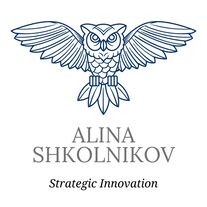|
The 2019 Sustainable Investing Conference, held at the United Nations Headquarters in December was truly, as promised, a gathering of exceptional financial experts and ESG industry professionals. All of whom came together to discussion the latest issues and trends surrounding sustainable, impact, and ESG (Environmental, Social, and Governance) investing. GPS destination: impact - Jeff Gitterman, Co-founding Partner at Gitterman Wealth Management led the conference and set the tone for the day nudging professionals in the financial world to provide investors with a GPS - setting positive social and environmental impact as the destination via full data sets and extensive information. This GPS was set over a decade ago and the first wave of the phenomena known as ESG investing was in 2008, at the peak of the global financial crisis. We are currently experiencing the second wave, resulting from geopolitical unrest, climate change and the rapid growth of social challenges around the world. Over this past decade we are seeing that ESG aligned investment management is proving to be more competitive, ensures better management and showcases lower systematic risk. In a world where CEOs are finally being removed from office because of inappropriate behavior, the ESG and impact discussion is clearly no longer “just” an ethical argument and has crucial implications for financial resilient. These are the core assumptions behind responsible capitalism, driven by a new social understanding of the role of capital and proving to be subject to superior risk management. David Yawman, Executive Vice President, Government Affairs, General Counsel and Corporate Secretary at PepsiCo, Inc. explained how this is manifested within a corporation: employees care about the social commitment of their corporation, customers care how their products are made and the communities the corporation is based out of care about the way it interacts with them. And, finally stakeholders also care, pushing PepsiCo to create a Public Policy and Sustainability committee on their board. All aimed at taking the next step - from compliance to compliance and ethics. When one needs to report to the board on actual policy changes it becomes more challenging to green wash, thus PepsiCo is now undertaking strategic processes to understand one of their biggest environmental hazard: plastic bottles. On the social side it’s clear PepsiCo sees great new opportunities in engaging with their supply chain operators (internal and external) around key issues such as human rights. A driving force in both supply and demand in this market are millennials and they are meant to have 30 trillion dollars transferred to them in the near future. Money that might go into different pockets of capital but can, in both cases (donations and investments) be leveraged via impact and ESG finance. As Curt Bassett, CEO and Founder of The Third Impact noted - impact investing is a great opportunity for investors, philanthropists and wealth managers to engage the next generation of generational wealth. Finally, we must remember that the only way to know if we got to our set destination is by actually measuring social and environmental outcomes and impact (positive and negative) - as we envision a global economy that serves everyone. Kathlyn Collins, ESG Research Analyst at Matthews Asia spoke specifically about the Asian markets, reviewing the challenges and opportunities presented as well as the unique data sets that can be used in this context. Based on current data trends it is clear there is growth in the healthcare markets and innovation within future carbon free economies. Simultaneously an educated middle class is growing, show casing greater productive, more political awareness and connecting to the digital world. Data sets on carbon emissions and protein consumption can be used alongside new large scale research that is currently being developed to evaluate positive and negative impact of corporations in the region. These data sets can lay the groundwork for regulatory changes towards a compulsory ESG reporting systems China is planning to adopt into law. Keynote: Elliott Harris – United Nations Chief Economist In setting out the Sustainable Development Goals (like the Millennium goals before them) the UN send a clear message: public markets alone can’t solve the challenges we are facing in our world today. Public markets need products they are sure of (with new products having long adaptation cycles) but, they know how to work with stretch, long term, goals. Meaning – the global public sector needs the privet sector and vice versa, making public private partnerships a great match. What can be done by private sector actors? Investors and shareholders can (and should) use sustainability as a tool for decision making and best practices and effective strategies should be shared across sectors. What can be done by public sector actors? Standards need to be developed and set and governments must create a leveled playing fields by stopping subsidize for oil and gas for example. There needs to be a case built - for sustainability and against unsustainability and we need to teach it in all business schools. The investors Many of the asset managers who presented at the conference attested that more and more investors are asking them to move towards responsible investment portfolios. What is needed by investors? Stewardship, leaning on easy terminology and simplification. Basic terms such as ABC (Act to avoid harm, Benefit stakeholders and Contribute to solutions) and simple agreed upon metrics (such as the IMP, a methodology created by the Impact Management Project) make it earlier for interested parties to find their way in. Andrew Lee, Managing Director at UBS made a bold statement: If you are not talking to your clients about ESG someone else will. Active approaches - Wealth managers looking for opportunities in fixed income, such as PIMCO, are investing heavily in research and development of relevant tools that will allow them to separate ESG signals from noise. Olivia Albrecht Pieter, Senior Vice President at PIMCO spoke about the great potential that bond issuers have for active engagement with stakeholders, growing the ESG conversation and creating more SDG related bonds. Why ESG? Michael Viehs, Head of ESG Integration in Public Markets at Hermes Investment Management presented an interesting matric explaining this question by suggesting to combine reputation, risk, returns and wider impact. Based on this matric ESG goals can drive outcomes beyond performance. Thus, leading to a reexamination of the corporate cost of capital, its operational performance and the stock performance over time (this is also true for countries). Passive investors – Gerold Koch, Director at DWS provided an interesting counter analogy positioning ESG not as a GPS, for passive investors, but as “self-driving autonomous vehicle”. This is well manifested in ESD indexing. Mona Naqvi, Senior Director of ESG at S&P Dow Jones Indices spoke about the S&P ESG Factor Weighted Index. Indexing provides strong tools for engagement as it encourages transparency and, in the long term, creates incentives that are clear for companies to raise their ESG rating. Based on the index and in line with future trends it seems we are inevitably moving into the direction of ESG weighted decision making. Recently even credit rating giants have started integrate ESG into their rating. Many of the speakers have demonstrated an inclusive approach with active stakeholder engagement as a key strategy, even with companies that don’t even uphold the most basic ESG and impact strategies and fail to act to avoid harm. It seems many prefer active stakeholder investments rather than divestment strategies. The argument made is that active conversations with companies, based on a positive approach rather than negative dialogue, can be as and even more meaningful. Risks Climate risk has taken the front of the stage at the 2019 Sustainable Investing Conference. Christopher Goolgasian, Director of Climate Research at Wellington Management Company, explained how climate risk can be used as a parameter to measure and manage risk in investments. Anything that is in a fixed location can and will be affected by climate change and thus should account for climate risks. Accounting for risk of extreme heat, wildfires, draught and even hurricanes can help price physical assets in a precise manner. This should, in the long term, be translated into country risk assessments as well. Strategies to tackle such risk can be categorized into three: defense (data collection and mapping in advance), offense (adapting to climate change and supporting solutions) and engagement (disclosure on physical and transitional risk). Part of the challenges of risk management in this context stem from the incentive structure of financial experts – they prefer (and are rewarded for) short term wins (3-5 years) while climate risk is a long term problem. Jeffrey Eckel, President and CEO of Hannon Armstrong, spoke of three opportunity areas in this context: decentralization, decarbonization and digitalization (the three Ds) with the future of energy being behind the meter. Climate risk was discussed not only in the E (environmental) of ESG sections but also in the context of its intersection with the S (social), specifically as it effects human rights. Not only for those who are directly affected by global warming but also in areas which will be seeing an influx in climate change refugees and migrants. We can already see that the communities that will disproportionately be effected are often communities that are already underprivileged and marginalized. This is not only a risk factor on the individual or community level but also when discussing sovereign risk (such as in the case of the meat industry in Brazil for example). Noel Pacarro Brown, Managing Member at The Conscious Wealth Management Group encouraged everyone to go deeper beyond the balance sheet and join this movement, speak up and become thought leaders. Photo by Jamie Street on Unsplash
0 Comments
Leave a Reply. |
AuthorMe :) Archives
August 2021
Categories |


 RSS Feed
RSS Feed
